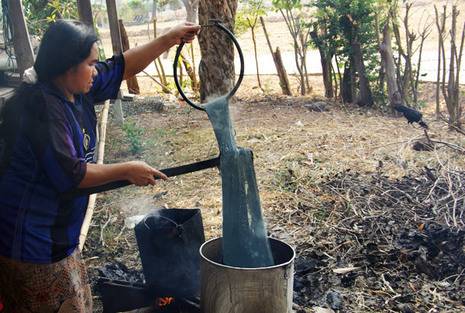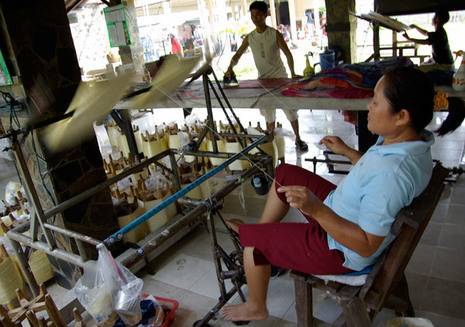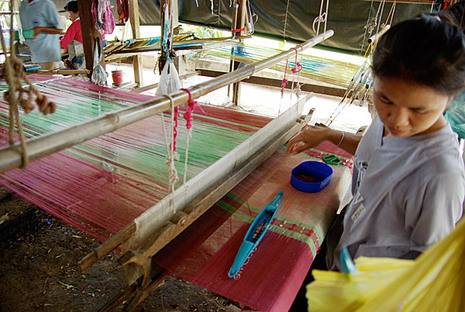Silk is one of the strongest, most luxurious, and most lustrous fabrics around. But do you know how craftspeople actually make silk?
Designboom has given readers a fascinating look at the traditional silk making process. They’ve been working with craftspeople in a small village in northeast Thailand. And their images reveal the highly skilled and very labor intensive process that goes into creating beautiful silk fabric.
You’ll find these photographs below along with a quick rundown of the six steps it takes to make silk.
Step 1. Raising silkworms & harvesting cocoons to make silk threads
Silk comes from the larvae (or caterpillars) of the silkmoth. Female silkmoths lay around 300 to 500 eggs at a time. These eggs are incubated until they hatch and caterpillars emerge.
The caterpillars then spend around six weeks fattening up on a diet of mulberry leaves before spinning their cocoons.
It takes a silkworm between 3 and 8 days to create their cocoon, which is formed from one single strand of silk. This strand measures an incredible 100 meters long and it’s held together in its cocoon shape by a natural gum called sericin.
Step 2. Extracting the silk threads

In order to unravel the silk thread, cocoons are placed into boiling water. This softens the sericin so the strand of silk can be reeled and wound.
Once all natural gum has been removed, threads are bleached and dried.
Step 3: Dyeing.

Next, it’s time to dye the silk. Traditional silk dyeing (the dyeing that takes place at this Thai village) uses dyes taken from nature.
Threads are soaked together in a pot of hot water and — depending on the desired color — a variety of different fruits and plant leaves.
By repeating the process a number of times over a number of days, the silk takes on the right color tone and quality.
Step 4: Spinning.

Now dyed and dry, the silk threads are spun together ready for weaving.
Step 5. Ikat (another kind of dyeing)

When designers want to make silk with lots of patterns, ikat (a traditional form of tie-dyeing) is the next step in the process.
Individual yarns (or groups of yarn) are bound together and then dyed. This process takes place before weaving. And is sometimes repeated many times to create wonderfully complex, multicolored patterns.
Step 6. Weaving

During the last stage of the silk making process, the final product takes shape. Skilled weavers use a variety of different weaving styles to create beautiful silk items with luxurious textures.
We hope you’ve enjoyed seeing how these talented craftspeople make silk. Designboom is now selling handmade silk scarves from this Thai village on its online shop.

i understand how silk is made, but how is the “end” of the thread found on the cocoon?
in response to wright gregon
they use a large hook in the boiling cocoon water and it catches the loose threads of the cocoons which they draw up through the eyelet and then start to reel to get it ready for the de-gumming and the spinning .